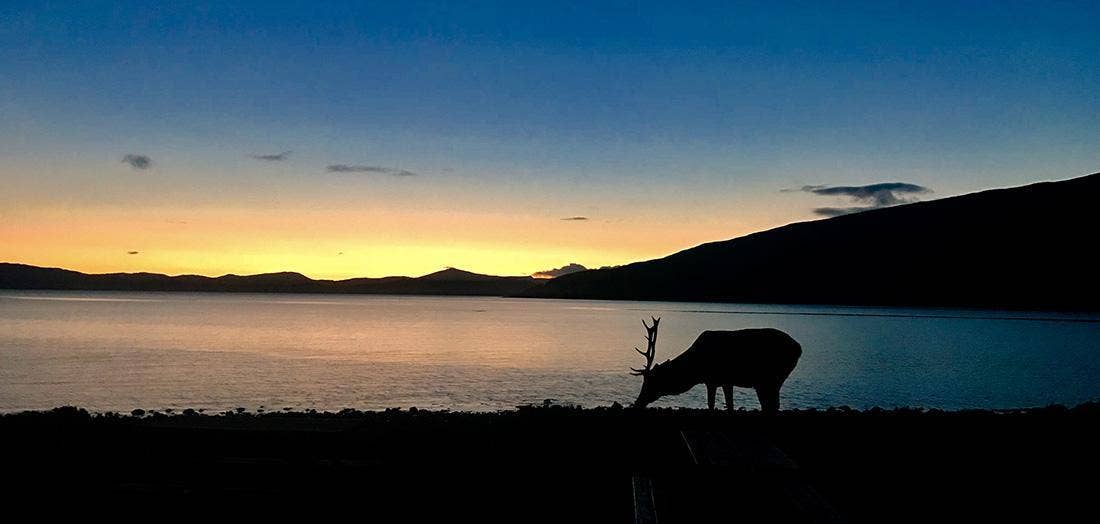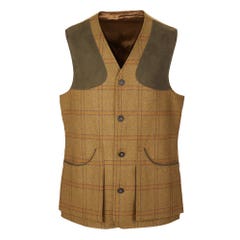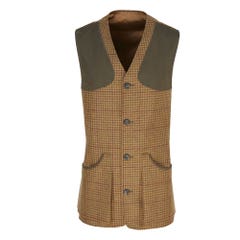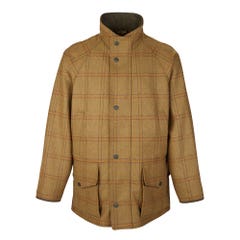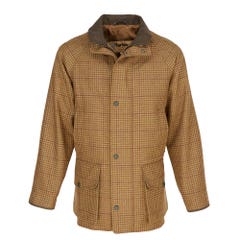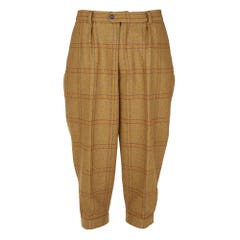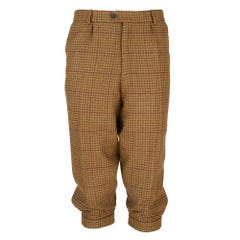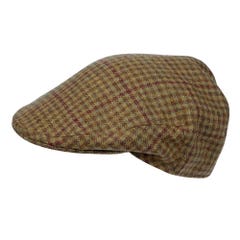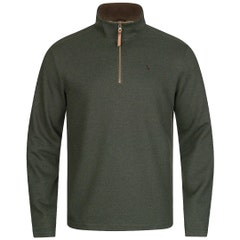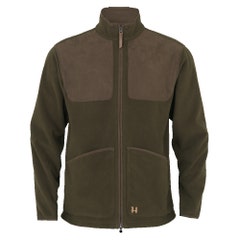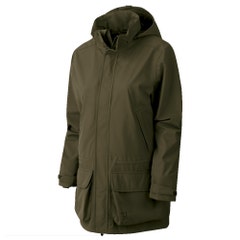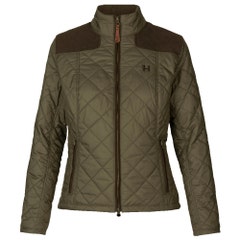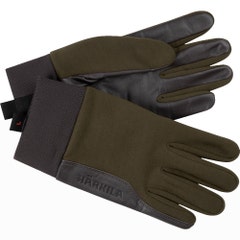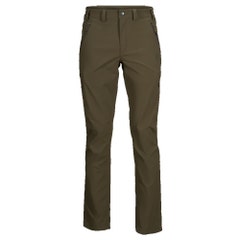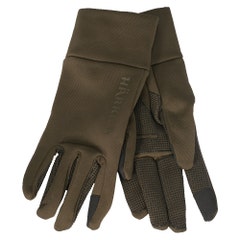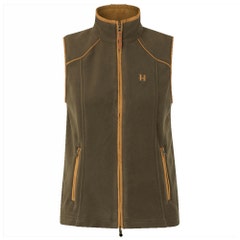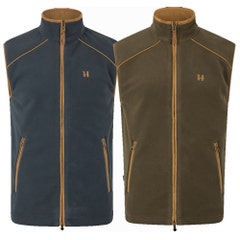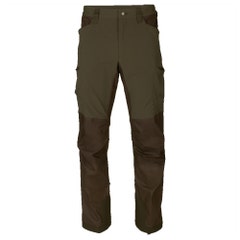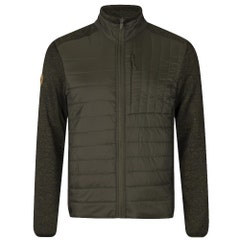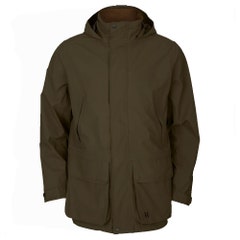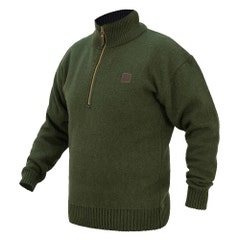Stalking a wild red stag on a Scottish mountainside is one of the most iconic images in fieldsports. It’s a sport where a sense of history is always apparent. As well as the excitement of the sport you will also be able to enjoy some of the most spectacular and majestic scenery the UK has to offer.
The stag is an emblem of wild places and hunting them in this setting is a true privilege. While carefully picking your way through blanket bog and heather or crawling along stream beds you could be in the 19th or 21st century, nothing apart from the rifle and clothing has changed or will change for a very long time.
Stalking is very important to the continued health of the deer population and careful management will ensure the best and healthiest beasts prosper in numbers that the land can comfortably support. Stalking allows this important aspect to be funded on many Highland estates.
The pursuit of the UK’s largest land mammal is an amazing experience and one which you will want to be prepared for. On the presumption that you will be accompanied by a stalker, I will not run into rifle safety or the art of stalking. The best piece of advice here is to listen to the stalker and do exactly what you’re told. If you are new to stalking you will likely be taken to a practice target before going on the hill to check your accuracy and gun handling.
The season for Scottish stags runs from the 1st July to the 20th October. The Hind season is from the 21st October until the 15th February.
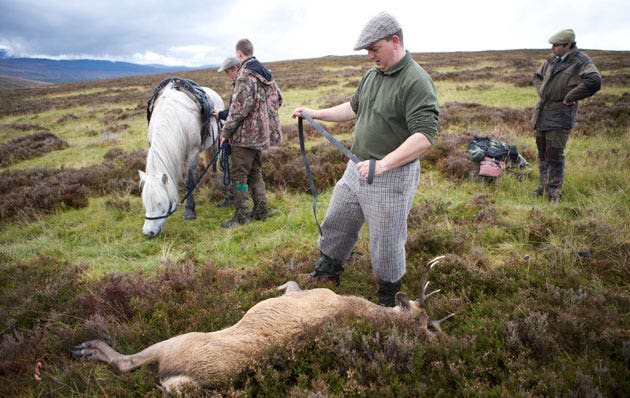 Stalking in the Scottish Highlands
Stalking in the Scottish HighlandsOne advantage that we do have over our 19th century predecessors is the advent of technical clothing. The climate on the hill can change very quickly so you will need a system of layered clothing that can be adapted to suit changing conditions. Waterproof breathable membranes and lightweight materials have been adopted readily into this traditional setting.
What I will do is run through the gear needed for a successful day on the hill - starting at the feet you will need:
Walking boots: A good pair of waterproof over-ankle boots is essential to eliminate the risk of turning an ankle on uneven terrain – Harkila Pro Hunter (coming soon!)
Socks: These must be suitable for use with Gore-tex products. Technical socks wick moisture and heat away from your feet i.e, the Dubarry Technical Socks or Brasher Mohair Long Socks if wearing breeks.
Breeks: At Farlows we stock a range of tweed breeks - including breeks with waterproof membranes ideal for wet ground when crawling i.e. the Sealand Woodcock Breeks
Gaiters: If wearing breeks on the hill it is essential to team them up with gaiters these cover the lower half of the leg providing a tough waterproof layer that also resists ticks.
Trousers: Harkila Pro-hunter Trousers and Sealand Woodcock Trousers are perfect. These are waterproof trousers not over-trousers i.e. worn in their own right. These have waterproof breathable membranes and tough outers making them ideal for crawling or kneeling on rocky and wet ground.
Overtrousers: These can be put in a kit bag and put on in the event of bad weather. Especially good when not wearing waterproof breeks or trousers. Schoffel Saxby - these pack up very small into their own pocket. Seeland Crieff - these unzip from top to bottom and can be taken off or on easily over boots. Schoffel Ptarmigan - a tough Cordura outer makes these very hard wearing.
Shirt: Comfort and mottled colours are the name of the game. The Sealand Burley Shirt is a great value example. The Harkila Trecking Shirt is made with bamboo fibres making it lightweight and breathable.
Jumpers and Fleeces: With a waterproof shell jacket in your bag incase of rain this may be the only outer layer that you need. Harkila Annaboda - complete with a Gore-tex windstopper lining. Laksen Wood - also with a windproof membrane. Armless fleeces are a good idea if going under a jacket so that movement is not restricted such as the Schoffel Oakham.
Jacket: Harkila Pro Hunter, an extremely well constructed jacket with a tough Cordura outer and a Gore-tex membrane. Depending on the season and the weather forecast you may opt to take a lightweight shell jacket which can fit easily into a kit bag such as the Schoffel Ketton.
Hat: A traditional tweed flat cap is still probably the best way to keep your head dry and break up your profile. Or the Seeland Woodcock Flat Cap with a waterproof membrane.
Bag: A small bag for carrying your ‘piece’ (Scottish term for a sandwich), waterproof trousers and binoculars. The Millican Rob Bag or Hardy Aln Bag are ideal choices.
If you'd like to find out more, please call the store on 0207 484 1000 and ask to speak to a member of the shooting team or simply leave your questions in the comments area below!
Don't forget to discover all the deer stalking clothing & equipment that Farlows offer »
Farlows Product Manager, Jack Gregorie, will walk you through some important guidelines for a comfortable and successful day out on the hill during the Red Deer Stag stalking season.
Stalking a wild Red Stag on a Scottish hillside is one of the most iconic images in fieldsports. It’s a sport that’s steeped in history and tradition, and one that plays a vital part to the wellbeing and health of the Red Deer population for future years to come. As well as the excitement of the sport you will also be able to enjoy some of the most spectacular and majestic scenery the UK, and of course world has to offer.
The Red Stag truly is one of the emblems that represents Scotland, so to stalk them in this setting is a true privilege. While carefully and silently picking your way through heavy bog and heather or crawling up steep hillside to reach the peak, you could very easily be in either the 19th or 21st century, nothing apart from the rifle and aspects of the clothing has changed or will change for a very long time.
Stalking is vitally important to the continued health of the deer population, and careful management will ensure the best and healthiest beasts prosper in numbers that the land can comfortably support. Stalking allows this important aspect of rural Scotland to be managed, and helps the upkeep of some of the most remote parts off the Highlands and the many estates that reside there.
The pursuit of the UK’s largest land mammal is an amazing experience and one which you will want to be prepared for. On the presumption that you will be accompanied by a stalker, I will not run into rifle safety or the art of stalking, as we could be here all day. The best piece of advice here is to listen to the stalker and do exactly what you’re told. They are highly trained and often have a lifetime of experience in the field. If you are new to stalking you will likely be taken to a practice target before going on the hill to check your accuracy and gun handling.
The season for Scottish stags runs from the 1st July to the 20th October. The Hind season is from the 21st October until the 15th February.
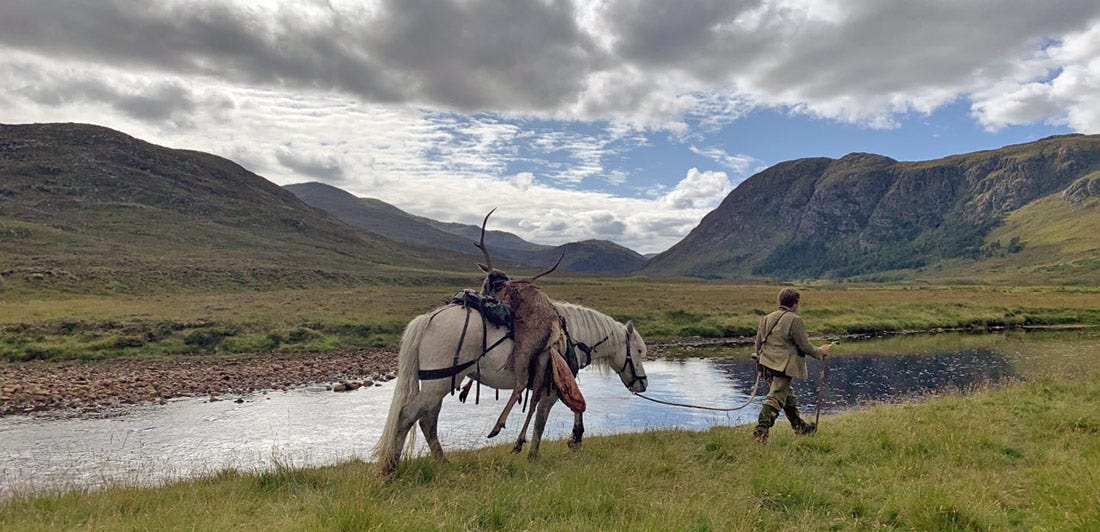

One advantage that we do have over our 19th century predecessors is the advent of technical clothing. The climate on the hill can change very quickly so you will need a system of layered clothing that can be adapted to suit changing conditions. Waterproof breathable membranes and modern materials have been adopted readily into this traditional setting. You will however notice that most stalkers still use tweed, usually the Estate tweed for their workplace. Often traditional tweed breeks are worn with a more technical top half and layering system.
Here is a small list of items you will need to be equipped with for a successful and comfortable day on the hill:
What to Wear Deer Stalking
Walking boots
A good pair of waterproof over-ankle boots are essential to ensure your ankle is properly supported whilst walking over the incredibly rough and diverse terrain found on a Scottish glen. The Meindl Dovre Extreme is a fantastic option.
Socks
A good quality pair of walking or shooting socks are vital. They will help protect your feet from the cold and provide cushioning in the places where it is most needed. Having sore feet whilst you have a long and rigorous day ahead of you is far from ideal. If you opt for a walking sock do ensure it is a turn-over top which will ensure maximum comfort in coordination with your breeks. Some great examples are Horizon Field Sports Technical Turn Over Top Socks or the Farlows Tayside Micros Houndstooth Sock & Garter set (Farlows shooting socks also come in a wide range of different options and colours).
Breeks
At Farlows we stock a range of tweed breeks - including breeks with waterproof membranes ideal for wet ground when crawling. The Farlows Lined Tweed Breeks are a great option, whilst the Laksen Tweed Breeks with CTX provide a waterproof option within tweed. Non-tweed waterproof alternatives such as Laksen Bransdale Breeks with CTX, Schoffel Ptarmigan Plus 2s GTX or the Seeland Woodcock Advance Shooting Breeks.
Gaiters
If wearing breeks on the hill it is essential to team them up with gaiters these cover the lower half of the leg providing a tough waterproof layer that also resists ticks. The Harkila Pro HWS Waterproof Gaiters or the Laksen Dynamic Eco CTX Gaiters both do the job superbly.
Trousers
If you would rather opt for trousers over breeks, the Harkila Pro Hunter Endure Waterproof Trousers or the Seeland Outdoor Membrane Waterproof Trousers work perfectly.
Overtrousers
These can be put in a kit bag and put on in the event of bad weather. Especially good when not wearing waterproof breeks or trousers. Schoffel Saxby II Overtrousers - these pack up very small into their own pocket. Schoffel Ptarmigan II Overtrousers - a tough Cordura outer makes these very hard wearing.
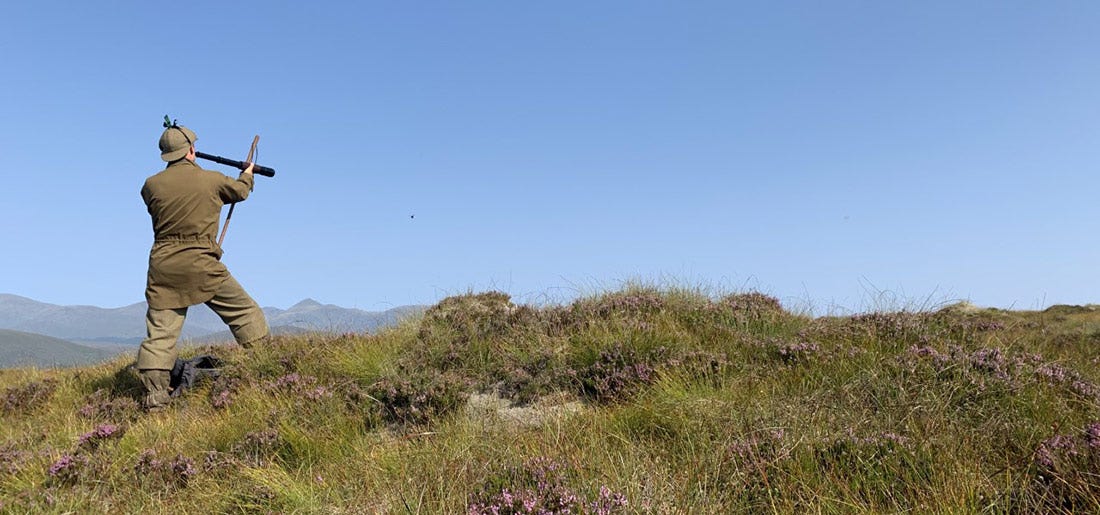

Shirt
Comfort and mottled colours are the name of the game. Whilst many stalkers opt for a more traditional Farlows Tattersall check shirt, these can be great options in the darker colours. However, they are usually made from cotton, which absorbs sweat and takes time to dry. A more modern alternative could be something like the Patagonia Capilene Midweight Crew Top. It is a polyester base layer that wicks moisture away from the skin. This helps keep your body dry and warm which in turn ensures a comfortable stalk.
Jumpers and Fleeces
The Farlows range of knitwear is all 100% woollen. This means that it is incredibly warm, doesn’t retain moisture and dries quickly, so it can play an important part in the layering system. The Farlows Lambswool Crew Neck Jumper or the Farlows Donegal Crew Neck Jumper both tick the box perfectly. Other options such as the Schoffel Oakham Fleece Gilet, Schoffel Cottesmore Fleece Jacket or the Laksen Windsor Windproof ¼ zip Jumper are all great examples.
Jacket
Depending on the time of year and the weather up on the hill, your options for outerwear can change. For colder mid-winter options, the Farlows Litchfield Tweed Fieldcoat works as a great jacket to wear stalking. It has a fully waterproof membrane which is also very breathable, the tweed selections are tonal to the hillside in Scotland and obviously a tweed coat is very at home up on a Scottish hillside. The Harkila Pro Hunter Endure is another great option for stalking. Made with a heavy canvas material with a waterproof membrane, this coat will also keep you dry and warm whilst out stalking. Earlier in the season and as long as the weather forecast is looking milder, you may opt to take a lightweight shell jacket which can fit easily into a kit bag such as the Schoffel Ketton.
Hat
A traditional tweed flat cap is still the best way to keep your head dry and break up your profile. Another great alternative is the Laksen Knitted Hat with CTX membrane, which is a waterproof beanie and the Swazi Micro Hasbeanie which is a fleece beanie are also great options.
Bag
A small bag for carrying your ‘piece’ (Scottish term for a sandwich), waterproof trousers and binoculars. The Croots Dalby Caryall Bag, the Farlows Troutbeck Bag and the Farlows Roll-Top Gamebag are all great options.
If you'd like to find out more, please call the store on 0207 484 1000 and ask to speak to a member of the shooting team or simply leave your questions in the comments area below!


